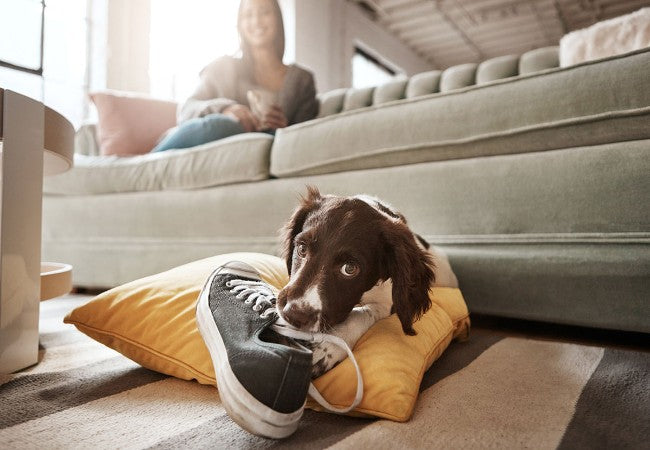Ultimate Puppy-Proofing Your Home 2025: Vet Approved Safety Tips 🏡🐾

In this article
Ultimate Puppy-Proofing Your Home 2025: Vet Approved Safety Tips 🏡🐾
By Dr. Duncan Houston BVSc
🔎 Why Puppy-Proof Early?
Puppies are naturally curious explorers with razor-sharp teeth and no fear—leaving anything reachable can lead to chewing hazards, toxic exposures, choking, or falls. Puppy-proofing is like toddler-proofing: it prevents accidents and supports effective training.
🛋️ Room-by-Room Safety Setup
Trash & Food Areas
- Secure trashcans with locking lids or store them in closed cabinets to prevent ingestion of toxins like chocolate, grapes, onions, and foil cuttings.
- Keep countertops clear and cupboards locked—human snacks can hurt puppies.
Electrical & Cords
- Conceal or wrap cords behind furniture or use plastic tubing to protect puppies from shocks.
- Install outlet covers to prevent licking or pawing dangers.
Furniture & Décor
- Anchor heavy furniture and secure shelves, lamps, and decorative items so they can’t tip.
- Use bitter sprays like taste deterrents to discourage chewing—pair this with safe chew toys.
Window Treatments
- Lift curtains off the floor and wind up blind cords—puppies can get tangled or chew these.
Plants & Toxic Items
- Move or remove toxic plants (e.g., lilies, philodendron) from puppy reach.
- Store medications, cleaning agents, antifreeze, and chemicals in secured cabinets.
Small Objects & Choking Hazards
- Keep small items—coins, batteries, rubber bands—off floors and in high storage.
- Lock bathroom/toilet seat to avoid falls or unsanitary ingestion.
Stairs, Gates & Boundaries
- Use baby/pet-gates to block stairs and off-limits rooms; allow supervised access gradually.
- Create puppy-only zones with pens/crates filled with toys for safe exploration while unsupervised.
🌳 Yard & Outdoor Safety
- Inspect fencing for gaps or holes—and remove toxic plants or chemicals from garden beds.
- Remove small debris like stones and secure driveway gates to prevent escape.
🧩 Establishing Safe Habits & Behavior
- Start with a reduced, safe area and gradually open more spaces as the pup matures and learns to behave.
- Supervise freely—puppies need guidance; absence applies only when you're confident the area is safe.
- Provide mental enrichment: safe chew toys, puzzle feeders and rotation to reduce destructive chewing.
📋 Dr Houston’s Puppy-Proofing Checklist
- ✔️ Secure trash, remove food hazards
- ✔️ Conceal all cords; use outlet covers
- ✔️ Anchor furniture and décor
- ✔️ Raise curtains, hide blind cords
- ✔️ Remove toxic plants & store chemicals/meds
- ✔️ Collect small objects from floors
- ✔️ Gate off stairs, limit access
- ✔️ Create supervised puppy area with crate or pen
- ✔️ Yard fencing safe; clear debris & toxins
- 📱 Ask A Vet is ready to tailor proofing strategies anytime
🌟 Final Thoughts
By viewing your home from puppy’s low and curious perspective and preparing prevention strategies in advance, you greatly reduce the risk of chews, toxins, falls, and escapes. Puppy-proofing protects both your pup and your peace of mind—while creating an environment ideal for learning, confidence-building, and stress-free bonding. 🐶❤️
Need help customizing your puppy-proof plan for your space or pup’s personality? Visit AskAVet.com or download the Ask A Vet app for personalized guidance anytime. 📱🐾






